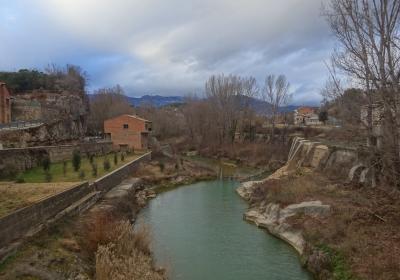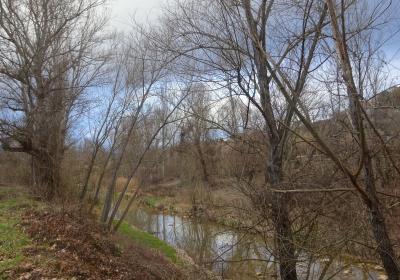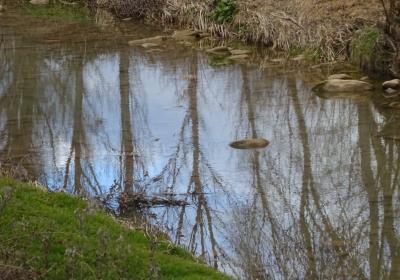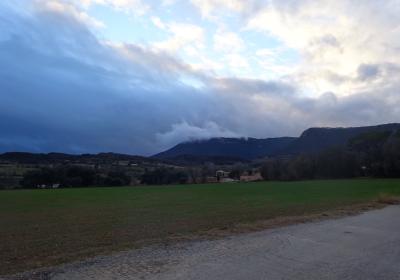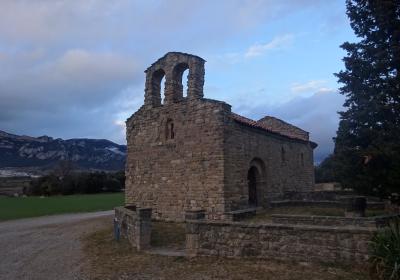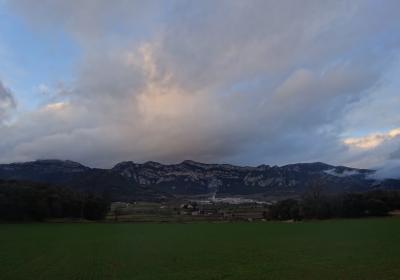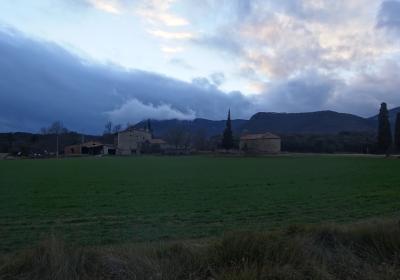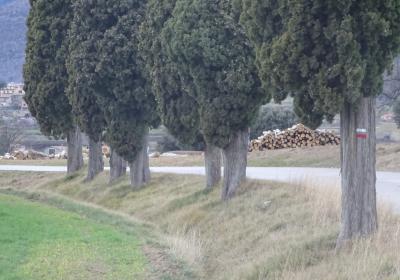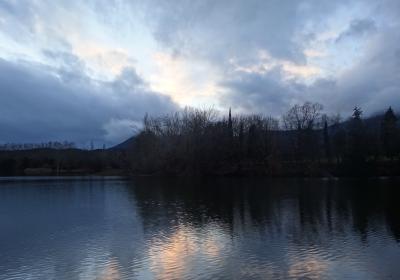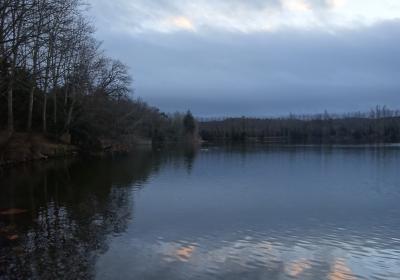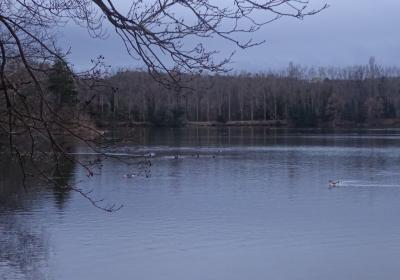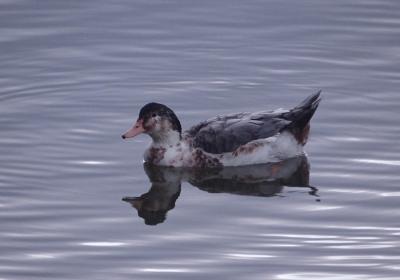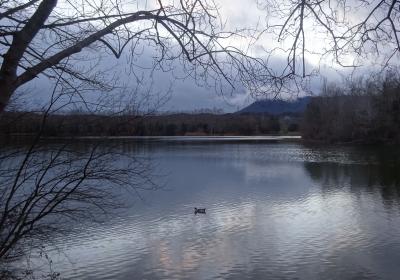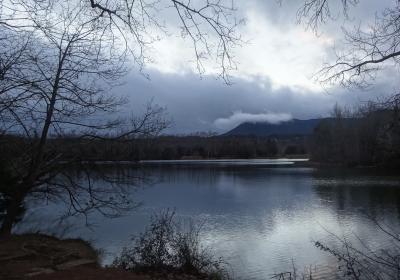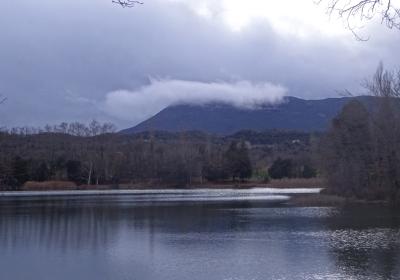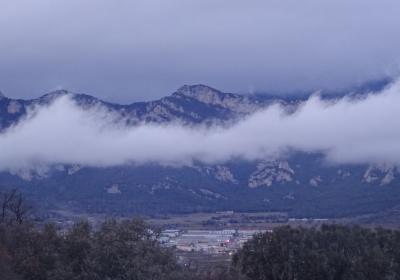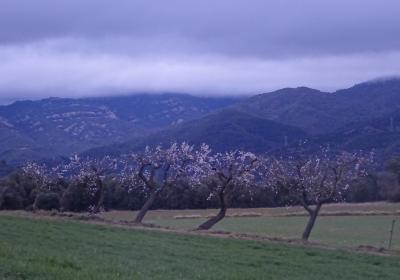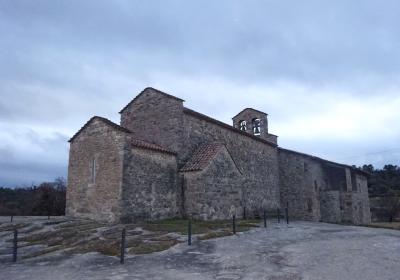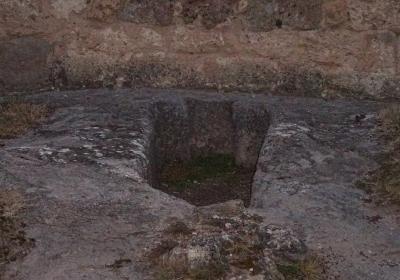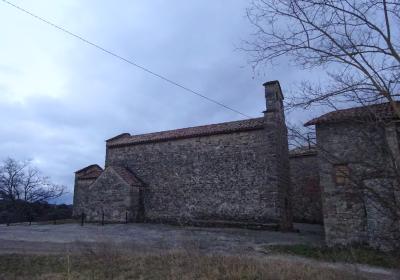Demanding stage, especially if it is warm, which moves through the western sector of Baix Berguedà, to the transition stage between the Central Depression and the Pre-Pyrenees. During the stage you will enjoy an extensive mosaic of forest and farming landscapes, and you can visit the artificial lakes of Graugés, that have become one of the main wetland zones in the Llobregat basin. Due to its great historic interest, it is also worth highlighting the Pre-Romanesque hermitage of Sant Vicenç d'Obiols, that you can visit during the stage, as well as the pretty Romanesque hermitage of Santa Maria d'Avià.
Considerable. Due to the distance and ascent to overcome.
No special equipment needed.
Regional map of Catalonia 1:50,000 Berguedà-14. Geological and Cartographic Institute of Catalonia (ICGC).
The thirteenth stage of the GR 1 Transversal route begins in (1) Gironella (0:00 - 452m). From Avenida de Catalunya, next to the bridge over the Llobregat river, you head northwest along Pont de Balç. On your left you pass the fountain, bar and tables of Font del Balç. You head along the side of the Llobregat river (the right) until you pass under the C-16 motorway. Some metres further ahead you turn left (W) and begin walking away from Llobregat.
You cross the stream of Graugés and continue to follow its course until the ravine where the stream comes down, splits into two. Just at that point, you head up the mountainside and arrive at Mas de Can Bellús. You continue heading north, walking among fields, banks and little woods. You pass El Colletó and will not take long to reach (2) Sant Vicenç d'Obiols (1:10 - 536m), a beautiful pre-Romanesque hermitage. From this hermitage, you follow the route northwest and pass the country houses of Cal Gris. Keep going and you will reach the little town of Graugés. It is highly recommendable to take a quick detour from the GR 1 and head to the beautiful Estany de Graugés (0:10 round trip).
You leave Graugés along the local road heading northwest. On a bend that the road takes to the left, you leave this track and take a path that goes up a little ravine until the access route to a campsite. You pass the entry point to the establishment on your right and continue along the path heading northwest. You soon come off the road again, at a crossroads. You pass the pretty hermitage of Santa Maria d'Avià and the industrial estate of the Camí de Santa Maria. Keep going and you will finally arrive at the plaza with the Church in (3) Avià (2:15 - 677m).
Leave Avià towards the south, along a paved road, and pass the cemetery. In the following stretch of the stage, until Casancots, you will continue south at all times. You cross the stream of Coforb and afterwards pass below the house of Can Gorans. You pass a hill and do a stage over a little hillock. You pass under a high-voltage electric line and turn to the right (SW). You will not take long to reach (4) Casancots (3:00 - 645m). You pass Molí de Casancots and cross the stream of Clarà. Soon afterwards, you cross the Afrau del Putxot and begin a very gentle climb heading southwest. You gradually turn towards the right (NW) and soon arrive at the Mas country house. At this point, you enter a wooded area and undertake the last stage along quite a winding path to the town of (5) L'Espunyola (4:20 - 800m), the finishing point of the thirteenth stage.
Walk along the bank of the Llobregat river, enjoying its riverside forest.
The transition between the plain and mountain.
The Pre-Romanesque hermitage of Sant Vicenç d'Obiols, which exhibits some vestiges of the Visigoth era.
The streams and hydraulic mills of Avià, the town’s true economic driving forces since the Middle Ages.
Avià is home to a series of hydraulic mills that have been crucial for the development for the development of the local economy since the Middle Ages. These infrastructures took advantage of the strength of the water that descends from the streams that cross the municipality. With windmills, flour mills, locks and canals, the residents of Avià were able to grind cereals, cut wood, mould plaster and, even, prepare corn. During this stage of the GR 1 you will pass the windmill and lock of Casancots.
Take a detour off the GR 1 for a few minutes and visit the lake and the ponds of Graugés, an important artificial wet zone that is surrounded by pretty riverbank trees for example alders, poplars, ash trees, cottonwood and willow. Next to the water there are reed beds, bulrushes and rushes. It is also worth highlighting the presence of lots of invertebrate fauna such as water fleas, copepods, and even caddisflies. Evidently, there are also several species of water birds.
The route for this stage is very exposed to the sun. If you undertake the route during the summer months it is important to drink water often and protect yourself from the sun in order to avoid heatstroke.

